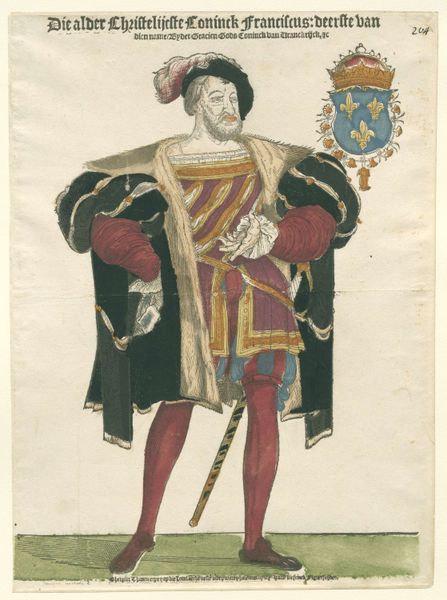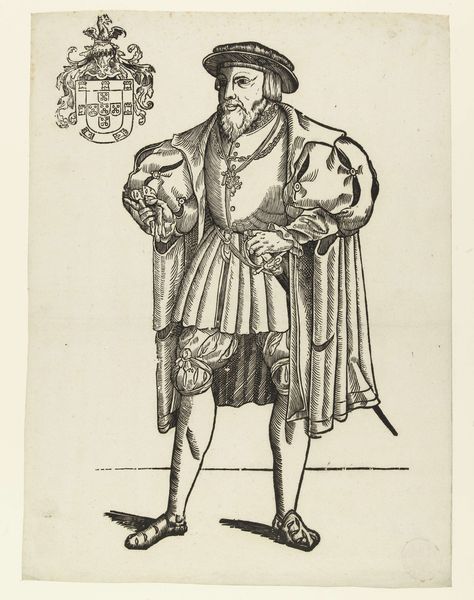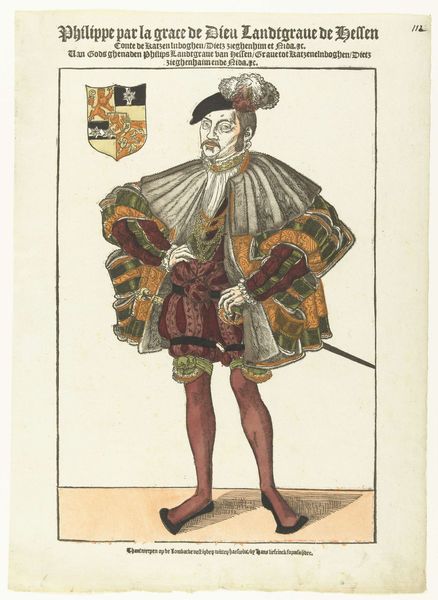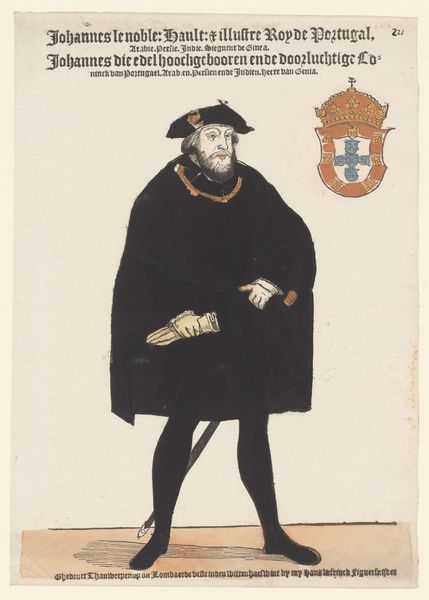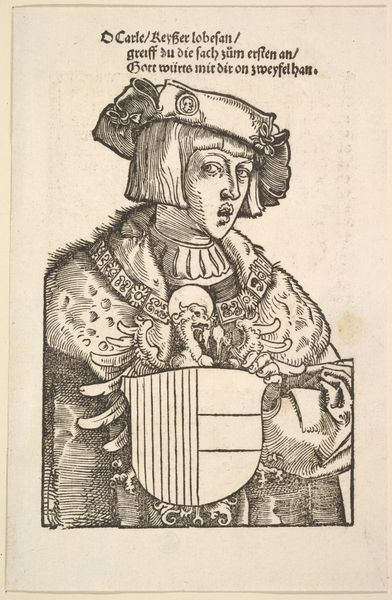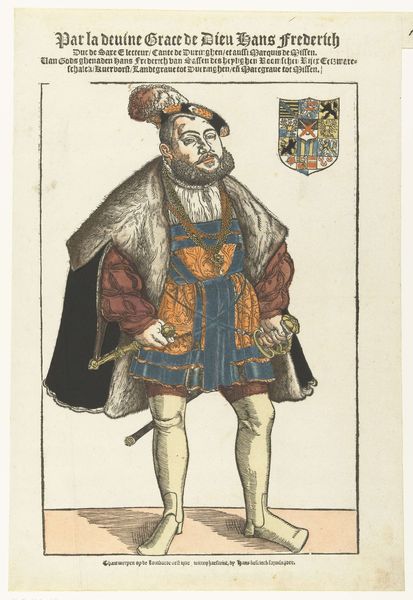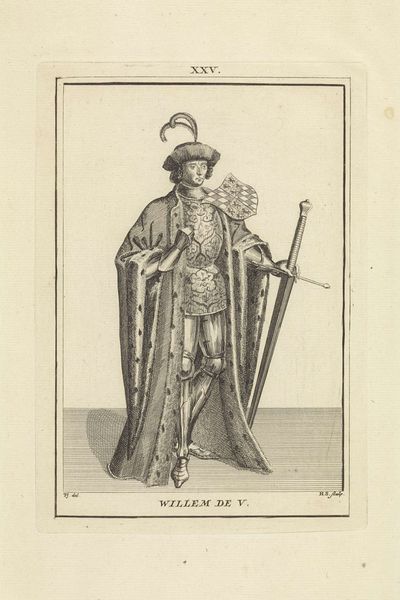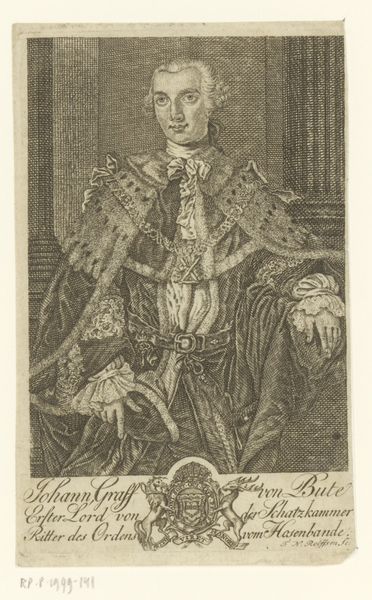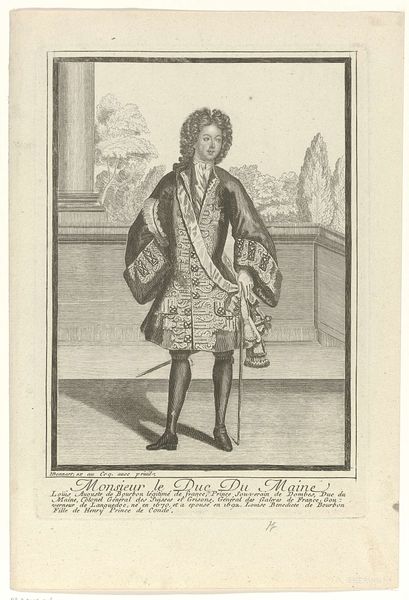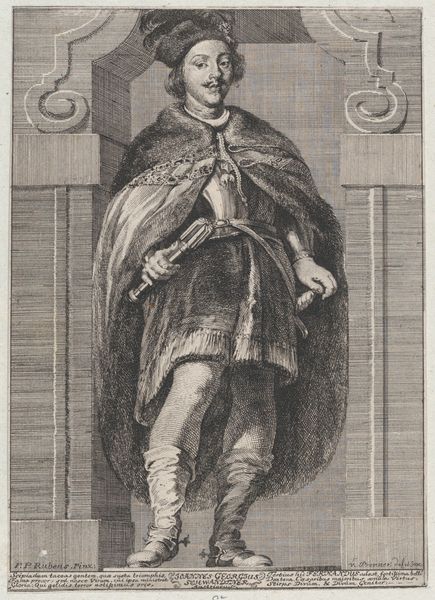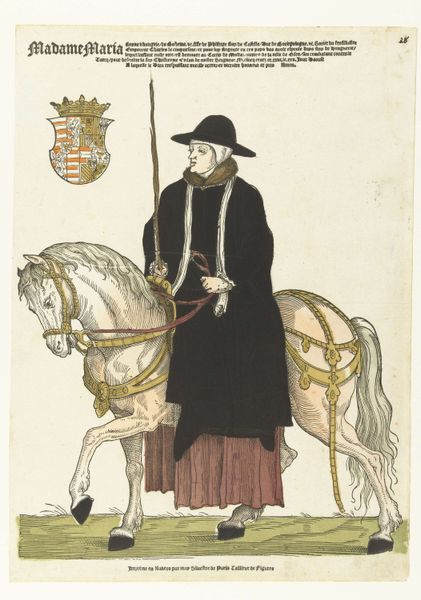
#
portrait
#
medieval
# print
#
caricature
#
traditional media
#
caricature
#
11_renaissance
#
history-painting
#
northern-renaissance
Dimensions: height 405 mm, width 297 mm
Copyright: Rijks Museum: Open Domain
Curator: Welcome. Here we have "Portret van Karel van Orléans," created by Cornelis Anthonisz. before 1545. It’s currently held at the Rijksmuseum. Editor: It's rather striking. The figure's stance, the elaborate clothing – there’s an almost unsettling air of arrogance, even within the print’s formal style. Curator: Precisely! This print provides a window into the societal obsession with portraying status during the Renaissance. Note the French inscription and heraldic crest alongside the portrayal of a high-ranking aristocrat and prince. Editor: The detailing of the fabric and furs gives it such texture. Look at the slashing on the sleeves, and the way light suggests the pile of the velvet! You can almost feel the weight and expense. I am curious about the process used to print this work and how accessible it would have been at the time. Curator: As a print, its creation speaks to the emergence of visual communication and the spread of images through society. While original paintings were often available to only the wealthiest classes, prints enabled those lower on the social ladder to observe depictions of important and powerful figures, potentially reshaping perceptions of those individuals and of societal leadership more broadly. Editor: Do you think it played any role in defining the standard dress styles of European nobility at the time? Perhaps the print was intended for tailoring workshops that had to fulfill those customer orders. Curator: Absolutely. Prints such as this functioned as tools for disseminating style and political influence. While the intention could have been varied, including use by artisans or to shape a ruler's reputation across their sphere of power, these are intriguing details about visual materials and power. Editor: It's amazing how something created with the intention to flaunt elitist power and high culture ends up democratizing and giving greater society a glimpse behind that curtain. Curator: Indeed, considering it alongside issues of craft and production complicates its history of power and privilege, allowing for new insights. Editor: It all really underscores the fact that the image and its materiality speak volumes. Curator: A good reminder as we explore further.
Comments
No comments
Be the first to comment and join the conversation on the ultimate creative platform.
